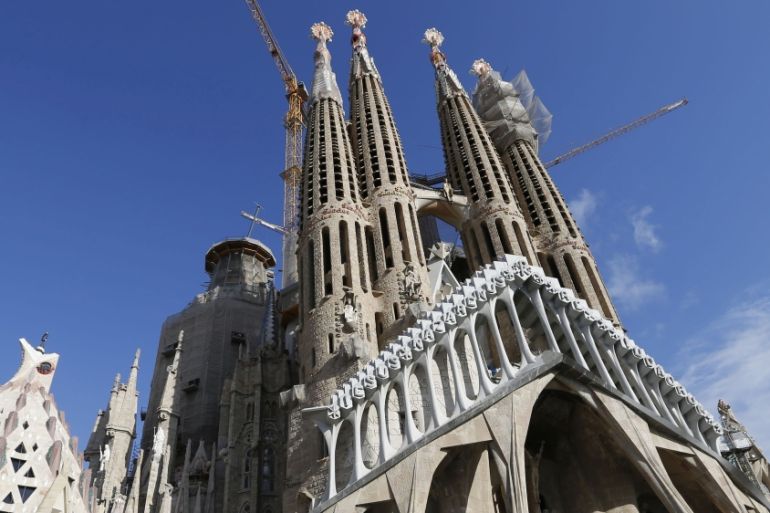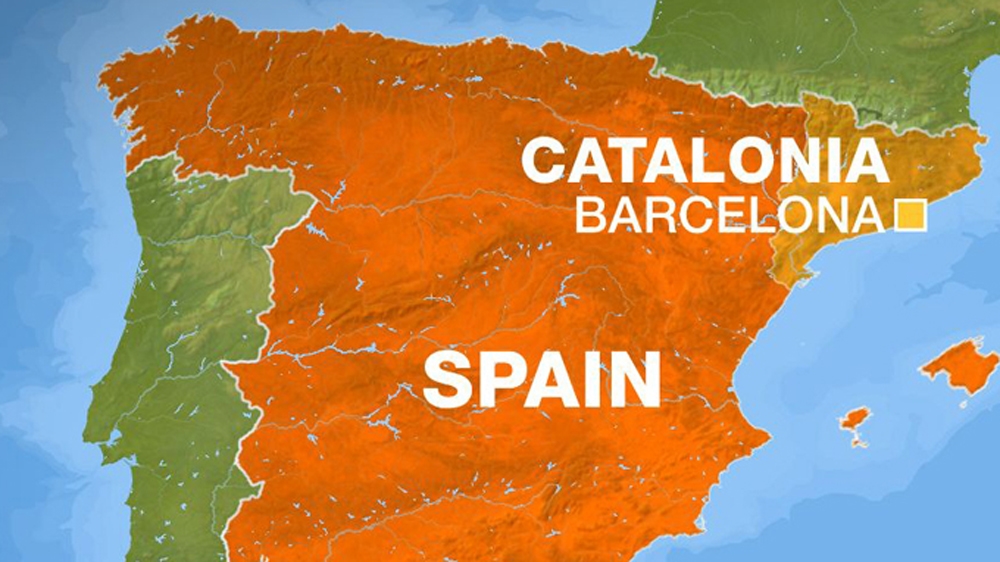Can Spain’s economy survive a Catalan secession?
A look at Catalonia’s economic might and how would a potential breakaway from Spain affect the country.

Catalonia, whose leaders are pushing for a split from Spain in a banned referendum on Sunday, is one of the powerhouses of the Spanish economy.
The region, in the northeast of Spain, is buoyed by industry, research and tourism – but burdened with a heavy debt.
Keep reading
list of 4 itemsLarge protests against Catalan amnesty deal in Madrid after PM sworn in
Thousands protest against Catalan amnesty in Spain
Spain’s Sanchez set to stay PM after amnesty deal with Catalan separatists
Catalonia accounted for 19 percent of Spain’s gross domestic product (GDP) last year, rivalling Madrid for the distinction of being the country’s richest region.
READ MORE: Catalonia independence referendum – All you need to know
It is fourth in terms of GDP per capita averaging 28,600 euro ($33,600), after Madrid, the northern Basque Country and neighbouring Navarra. GDP per capita in Spain overall is 24,000 euro.
|
|
Like in Madrid, unemployment is also lower than in the rest of the country: 13.2 percent in the second quarter of 2017 compared with 17.2 percent nationally.
Home to big companies
Catalonia is by far Spain’s top exporting region, with 25 percent of all goods produced there sold abroad last year and in the first quarter of 2017.
It attracted some 14 percent of foreign investment in Spain in 2015, in second place after Madrid, which received a huge 64 percent, but far ahead of all the other regions, according to the economy ministry’s latest data.
Several large companies have their headquarters in Catalonia’s capital, Barcelona: textile group Mango, Spain’s third-largest bank CaixaBank, Gas Natural, highway giant Abertis or perfume firm Puig, which owns Nina Ricci, Paco Rabanne and Jean-Paul Gaultier.
|
|
Major industrial player
The agrifood, chemistry and car-manufacturing sectors are pillars of Catalan industry, which also has a big logistics hub.
The biggest industrial sector in the region in terms of jobs and turnover is agrifood, buoyed by the powerful meat business which exports a lot of pork.
READ MORE: Spanish police seal off polling stations in Catalonia
Oil, food for cattle and grocery products also contribute.
The region concentrates around half of all of Spain’s chemical production, with a major hub in Tarragona.
According to the sector’s regional federation, turnover in Catalonia is higher than in Austria or Denmark.
In 2016, the region was also the second car producer in Spain after Castilla y Leon. Nissan and Volkswagen, via its brand Seat, have factories there. Spain is the second-biggest vehicle maker in the EU after Germany.
![Separatist supporters inside the University of Barcelona's historic building a day before the vote [Enrique Calvo/Reuters]](/wp-content/uploads/2017/09/3be55dffc2774491affb7fe4d66e0727_18.jpeg)
New technology and research
Since the 1990s, Catalonia has invested in research, particularly in bioscience – genetics, neuroscience, cell biology – and the sector now represents seven percent of its GDP.
With many cutting-edge hospitals and research centres, including in the nuclear sector with a particle accelerator, the region says it is number one in Europe for pharmaceutical companies per capita.
READ MORE: Catalonia referendum ‘impossible to stop’
New technology is also very present in Barcelona, which every year hosts the Mobile World Congress.
Catalan universities are among the best in the country: of the top five Spanish universities in the widely watched annual ranking compiled by the independent Shanghai Ranking Consultancy, three are Catalan.
These are Pompeu Fabra, the University of Barcelona and the Autonomous University of Barcelona.
Its business schools – Esade and IESE – are well known and Barcelona also has big publishing houses.
![The Casa Batllo, one of famed architect Antoni Gaudi's masterpieces, illuminated in Barcelona [File: Albert Gea/Reuters]](/wp-content/uploads/2017/09/1f61e622ef5744a3a5b9676adfdef697_18.jpeg)
Top tourism destination
With its Barcelona and Costa Brava beaches, Catalonia is the Spanish region that most attracts foreign tourists and the trend is on the rise.
More than 18 million visitors went in 2016, or a quarter of all foreigners who came to Spain.
Its airport is the country’s second-biggest after Madrid. In 2016, it handled more than 44 million passengers.
It is particularly valued by low-cost companies that want to make it a European hub for their long-distance flights to the Americas.
Barcelona’s port is the third-biggest in Spain for goods after Algeciras in the south and Valencia in the east and one of the largest in Europe for cruise ships.
|
|
Debt the weak link
Catalonia’s debt represents 35.4 percent of its GDP, which made it the third-most indebted region in Spain in the first quarter of 2017, after Valencia and Castilla La Mancha.
At the end of June, its debt stood at 76.7 billion euros.
Ratings agencies have given it a low, speculative grade, which means Catalonia is not able to borrow directly on financial markets. So it depends on loans emitted by the Spanish state.
|
|
Economic impact of secession
The issue is much debated among both camps, who generally present widely different figures, often based on different methodologies and hypotheses.
If independence were to happen, Spain’s economy ministry claims that Catalonia would leave the European Union, its GDP would fall 25 to 30 percent and unemployment would double.
But some economists believe that the newly formed republic would stay in the EU, predicting its GDP would remain stable in the short term and rise seven percent long term.
Catalonia’s government also says the region would no longer suffer from what it calls a “fiscal deficit”, given that the region pays more in taxes to Madrid than it gets back.
The regional executive says this deficit is around 16 billion euro, or eight percent of Catalonia’s GDP and the central government, with a different methodology, estimates it to be 10 billion euro, or five percent of regional GDP.
